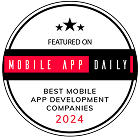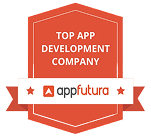Introduction
Ever caught yourself wondering, “How much would it really cost to build an AI app in 2025?”
Well, you’re not alone. As artificial intelligence continues to dominate the tech landscape, more founders and enterprises are racing to build AI-powered solutions—from basic chatbots to advanced predictive platforms. But while the demand is exploding, understanding the real cost of development remains a mystery for many.
In this guide, we’re going to break down the actual costs of AI app development in 2025. From MVP Development (minimum viable products) to full-blown enterprise solutions, you’ll get detailed pricing insights, cost breakdowns, real-world examples, and strategies to save money without compromising on quality.
Let’s dive in.
Understanding AI App Development in 2025
What Qualifies as an AI App?
In 2025, not every software tool with “AI” in its branding is genuinely intelligent. A real AI app uses machine learning, deep learning, or neural networks to perform tasks like predicting outcomes, processing large data sets, personalizing user experiences, or automating complex workflows.
Think of:
- A virtual assistant that understands slang and context.
- A healthcare app predicting early symptoms based on behavior.
- An eCommerce platform that updates recommendations in real-time.
These aren’t future dreams—they’re today’s expectations.
Popular AI App Categories in 2025
The AI ecosystem is broad and rapidly evolving. Here are the most in-demand AI app categories:
- Conversational AI – Chatbots and voice assistants for customer service.
- Predictive Analytics – Used in healthcare, logistics, and fintech to forecast events.
- Computer Vision – Powers image recognition, AR, surveillance, and more.
- Recommendation Engines – Personalizing feeds for music, shopping, or content.
- Generative AI – Creating text, images, video, and even code.
- AI Agents & Automation Bots – Performing multi-step workflows and user support.
Also Read – AI Agents Explained: Why They Matter and Real-World Use Cases
How Technology is Shaping Pricing
With advancements like Mistral, Phi-3, AutoML, and no-code AI platforms, the development barrier has dropped significantly. Startups can now deploy working MVPs faster and at lower costs. But there’s a catch. As AI tech becomes more capable, user expectations also increase. This leads to a need for higher accuracy, real-time performance, and smart automation—which drives up development cost at scale.
Cloud costs, GPU usage, and regulatory requirements (like GDPR and HIPAA) also impact long-term pricing.
Major Cost Factors in AI App Development
Pricing for AI app development isn’t one-size-fits-all. It depends on several core factors:
1. Project Complexity & Scope
A chatbot with predefined answers is cheap. A self-learning virtual assistant that supports multiple languages and remembers past interactions? Not so much.
The more moving parts your AI app has, the higher the cost:
- User roles
- Data sources
- Integrations
- Scalability needs
2. Type of AI Model
Each model comes with its own challenges:
- NLP (Natural Language Processing): Ideal for chatbots, voice commands, and language generation. Needs access to large language datasets.
- Computer Vision: Processes images and video. Requires heavy GPU usage and large-scale storage.
- Predictive Models: Analyze trends, behaviors, and forecasts. Best suited for fintech, logistics, and healthcare.
3. Custom vs Off-the-Shelf Solutions
Using pre-trained models like GPT-4 or Google Vision can drastically reduce cost and development time. However, if you require precise control, custom-built models offer higher accuracy and better performance—although they’re more expensive due to the costs associated with training, testing, and optimization.
4. Developer Location and Experience
Developer rates vary widely:
- US/Canada: $100–$200/hour
- Europe: $60–$150/hour
- India/Southeast Asia: $25–$60/hour
Your total cost will scale based on time, skill level, and team size.
5. Infrastructure, APIs, and Tooling
AI apps don’t work in isolation. They rely on:
- APIs (like OpenAI, Cohere, Google Vision)
- Cloud platforms (AWS, Azure, GCP)
- Data pipelines
- Monitoring & analytics tools
These services are often pay-as-you-go and can grow as your user base scales.
Also Read – How Much Does It Cost to Hire an App Developer in Dubai 2025
MVP vs Full-Scale AI App: Pricing Breakdown
What Is an AI MVP?
An MVP (Minimum Viable Product) is the leanest version of your AI app that delivers the core value. It proves your idea works before investing heavily in a full build.
For example, a customer support chatbot that answers FAQs using OpenAI’s API is a great MVP. It may not support multilingual or context retention features yet—but it works.
Cost of Developing an AI MVP
AI MVPs are generally affordable and faster to build:
- Simple chatbot or recommendation MVP: $8,000–$20,000
- Moderate AI MVP with basic custom :$25,000–$40,000
- Advanced MVP (vision, NLP with API): $50,000–$80,000
Development time ranges from 4 to 12 weeks, depending on the scope.
Scaling to a Full-Scale AI Product
Once you validate your MVP, scaling up includes:
- Building custom AI models
- Real-time data processing
- Complex user management
- Full UI/UX for web and mobile
- Scalable backend infrastructure
- Security, analytics, monitoring
- Model retraining and automation
Expect to invest $80,000 to $300,000+ for full-scale AI apps, especially if they serve thousands of users or require high-speed performance.
AI App Development Costs by Type
Let’s look at specific app types and what you can expect to pay:
AI Chatbots & Virtual Assistants
- Basic FAQ bots: $5,000 – $10,000
- Contextual chatbots using GPT-4: $25,000 – $50,000
Multilingual, voice-enabled AI assistants: $60,000 – $150,000
Predictive Analytics Platforms
- Simple trend analysis tool: $30,000 – $50,000
- Enterprise-grade platform with dashboards: $100,000 – $200,000+
AI-Powered Mobile Apps
- Personalized fitness app: $40,000 – $80,000
- Emotion recognition or voice command apps: $100,000 – $150,000+
Computer Vision Applications
- Face or object detection on mobile: $70,000 – $120,000
- Real-time video analytics and AR: $150,000 – $300,000+
Hidden Costs You Shouldn’t Ignore
AI development has some costs that catch founders off guard. Here’s what to watch for:
Data Collection and Cleaning
Training accurate models starts with clean data. But most data is messy, incomplete, or unstructured. Hiring data annotation teams or using tools like Scale.ai or Labelbox adds time and money to your project.
Cost: $2,000 – $20,000 depending on volume.
Model Retraining and Monitoring
AI models degrade over time. User behavior shifts, datasets evolve, and accuracy can drop. Regular retraining and monitoring are essential, adding long-term maintenance costs.
Annual cost: 15%–25% of your initial development cost.
Compliance and Security
If your AI app handles sensitive data (like health or finance), compliance with HIPAA, GDPR, or CCPA is non-negotiable. This involves documentation, audits, encryption, and legal reviews.
Cost varies from $3,000 to $50,000+, depending on scope and region.
Hidden Pricing Insight: Model Drift & Data Decay – The Silent Budget Killer
Most pricing blogs talk about AI model training and development, but very few highlight one of the most critical long-term cost drivers of AI apps in 2025 — Model Drift and Data Decay.
So what are these?
Model Drift happens when your AI model’s accuracy decreases over time because the real-world data it sees begins to change.
Data Decay is when the data your model was trained on becomes outdated, irrelevant, or biased due to changing behaviors, industries, or events.
These aren’t just technical buzzwords—they’re real, measurable issues that quietly eat up your budget if you’re not prepared.
Example:
Let’s say you build an AI app in early 2025 that predicts customer churn for a subscription service. Your model is trained on historical data from 2022–2024. But by mid-2026, your user behavior changes drastically due to new industry trends, regulations, or even economic shifts. Suddenly, your model’s predictions drop in accuracy.
What happens next?
- Your team is forced to collect fresh data
- You need to retrain or fine-tune your model
- That means additional cloud costs, engineering time, and QA effort
The Real Cost:
Most teams forget to budget for model drift, but in reality, it can cost $5,000 to $30,000+ per retraining cycle, depending on model complexity and infrastructure.
And if you don’t fix it?
You risk bad predictions, user dissatisfaction, or even product failure—which can cost far more.
Pro Tip to Save Money:
Build Model Monitoring into Your MVP from day one. Tools like WhyLabs, Arize AI, or AI help you track model performance over time, alerting you before accuracy drops.
This gives you a competitive edge and saves thousands in emergency fixes later.
How to Save Money Without Cutting Corners
Saving on cost doesn’t mean sacrificing quality. Here’s how smart teams do it:
Focus Your MVP on One Core Feature
Don’t try to launch with five AI features. Instead, nail one thing that solves a clear problem. A focused MVP builds confidence and gives you real user data to improve upon.
Use Open-Source and Pre-trained Models
Frameworks like HuggingFace, TensorFlow, and LangChain offer free or low-cost models that are powerful enough for many use cases. This helps you test ideas without spending on training.
Partner With the Right Development Team
Choose developers who specialize in AI. They’ll help you avoid costly mistakes, select the right tech stack, and build for long-term scalability. Always look for transparent pricing and a clear roadmap.
Real-World Examples and Cost Benchmarks
Here are a few fictional (but realistic) examples based on industry standards:
Startup A – Chatbot MVP
This team built a GPT-based support bot with basic fallback logic. It was deployed on their website in 6 weeks. Total cost? Around $13,000.
Startup B – Predictive Sales Platform
They created a B2B tool that forecasts sales and recommends actions. It is integrated with CRM and third-party APIs. It took 5 months to build and cost roughly $170,000.
Company C – AI Image Recognition App
They launched an app that identifies plant diseases using computer vision. It supports offline mode and handles real-time detection. The project ran for 8 months and cost over $220,000.
Also Read – How to Build a Language Learning App Like Duolingo?
Will AI App Development Become Cheaper or More Expensive?
Both trends are happening simultaneously.
Thanks to no-code tools and open-source models, launching an MVP is more affordable than ever. But building a high-quality, scalable, and compliant AI product is becoming more expensive due to rising expectations, privacy laws, and competition.
If you’re building in 2025, the best time to start is now—while infrastructure is mature, but not overly saturated.
Conclusion
Building an AI app in 2025 can cost anywhere from $8,000 to $300,000+, depending on your goals, model complexity, and the scale you want to achieve. The good news? You don’t need millions to start. With smart planning, the right tools, and a clear MVP vision, AI can be both accessible and transformative for your business.
Whether you’re looking to disrupt an industry or simply make your processes smarter, the cost of entry has never been more flexible. So take the leap—AI might just be your most valuable investment this year.













.png)


